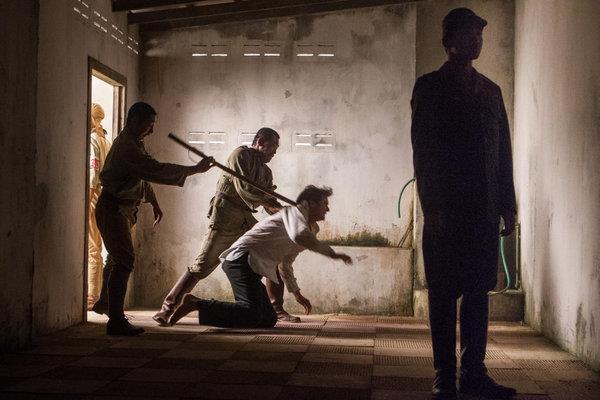 In 1993 on the bridge on the River Kwai, World War II Veteran Eric Lomax confronted his Japanese prisoner of war tormentor, Takashi Nagase. Currently playing in cinemas all over Australia, The Railway Man is the true story of Lomax, based on his autobiography of the same name.
In 1993 on the bridge on the River Kwai, World War II Veteran Eric Lomax confronted his Japanese prisoner of war tormentor, Takashi Nagase. Currently playing in cinemas all over Australia, The Railway Man is the true story of Lomax, based on his autobiography of the same name.
While the film could be easily categorised into the war genre, Director Jonathan Teplitzky (Burning Man) explains the themes of love and forgiveness creates a film for all ages and cultures.
“Eric’s story reminds us of what we are all capable of; in doing terrible things to each other, but also finding it in ourselves to bring each other together and to find reconciliation,” Teplitzky says.
Cutting between Britain in the 1980’s with flashbacks to the far-eastern war region, circa 1942, the role of Eric Lomax is shared by Academy Award Winner, Colin Firth (The King’s Speech) and Jeremy Irvine (Young British Performer of the Year for War Horse). Their incredibly consistent characterisation is no accident. Teplitzky explains, “they did a lot of work together. At any point in the film if you are following Jeremy or Colin, you have a strong sense that you are on Eric’s journey.”
There are many themes, stories and historical angles which could be explored in this film, however, the decision to script Stallan Skarsgård as Uncle Finley, Nicole Kidman as Patti Lomax. and the other minor characters quietly in the background was deliberate, explains Teplitzky.
“The thing about reconciliation is that forgiveness doesn’t happen overnight. It’s an emotional process to go through and we needed to ensure we had a lot of time in dialogue for this… it was intimate between the characters of Lomax and Nagase, and I liked that the film did this.”
The torture scenes are intentionally raw and dramatic as well, says Teplitzky.
“It was important to maintain a degree of shocking violence and darkness that young Eric and the audience has to go through, so that when the reconciliation comes, you understand the power of him letting go.”
Nagase (Hiroyuki Sanada) perfectly portrays a man dealing with his own demons during the confrontation scene. Teplitzky illustrates, “it was important Nagase wasn’t an archetypal baddie, but someone we could identify with on a human level. You need remember these guys were just kids who were put in very morally ambiguous situations and asked to kill people and do the dirtiest of work. In Nagase, Eric discovered someone who was genuinely trying to make amends and was remorseful for what he had done. This was important to the evolution of Eric’s reconciliation.”
Viewers must understand this is a true story, otherwise the happily ever after ending could be misunderstood as an attempt to tightly close a deep and complicated piece.
“Eric wrote a letter to Nagase which he handed to him, just as you see in the film,” Teplitzky says. Additionally, the poem Eric recites in his darkest hours is an Eric Lomax original.
“It was a mantra that he used to hide away when things got particularly bad, whether it is memories or during the course of his tourtures,” explains Teplitzky.
To ensure historical accuracy, the Lomax family were heavily involved in the making of this movie. Patti Lomax participated heavily in the film’s global launch at the Toronto Independent Film Festival last September. Firth and Irvine spent a lot of time with the real Eric Lomax, who calmly admitted to the actors that he “most certainly” went to Singapore with the intention of killing his nemesis. Although 93 years old and frail, Eric was present for some filming and viewed some of the unfinished work before his death in 2012. Lomax and Nagase did become close friends, who bonded through their shared experience.
Known for his ability to tell exceptionally emotive stories through film, Teplitzky has done it again with The Railway Man. The screenplay of Frank Cottrell Boyce and Andy Paterson, combined with the mournful tones of BAFTA and APRA Screen Music Award-winning music by David Hirschenfelder and the portrait-style cinematography Garry Phillips creates a memorable viewing experience. The film is well balanced, well paced and incredibly well constructed. While the film will clearly appeal to war film and history buffs, it is on the whole, a film about the strength of human spirit and will resonate with a wide audience.
Interview by Bree Downs-Woolley
The Railway Man is now showing at selected cinemas.
Duration: 116 minutes
Disclosure: rated M – mature themes and violence























